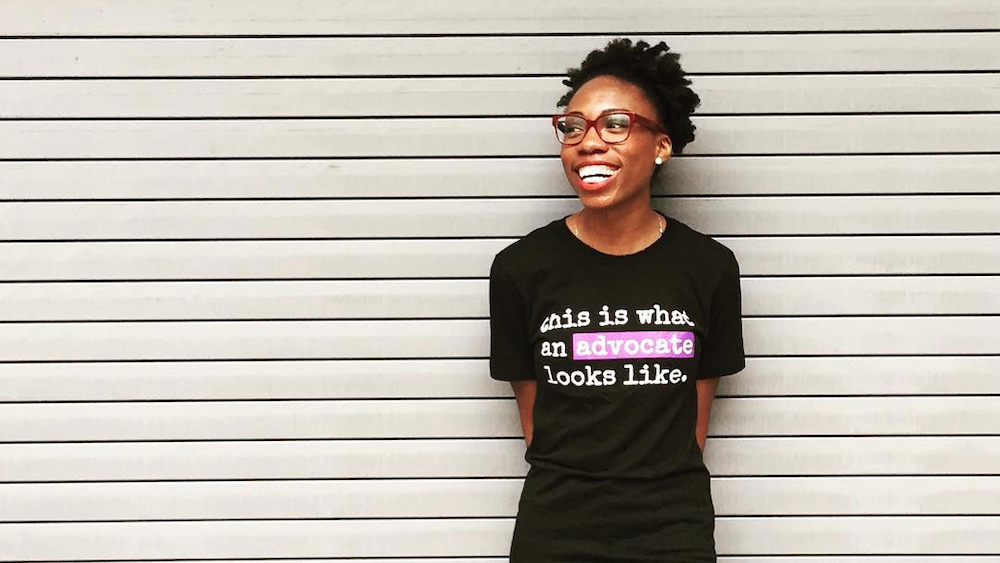This piece was submitted from a member of our enthusiastic community of readers. If you’re interested in sharing your opinion on any cultural, political or personal topic, create an account here and check out our how-to post to learn more.
More than 15 years ago, I was almost sent home from school for what I thought was an isolated event. My skort was not fingertip length and therefore violated my school’s dress code. My mom was called. She left work to stop by our house and pick up a pair of jeans and drove to my school so that I could change. But not before speaking her mind.
I remember my mom advocating for me. I remember her stating that my fingertips practically stopped just above my knees, and that other girls had fingertips that stopped mid-to-upper thigh. I remember my mom pointing out the logical flaw in this unfair dress code — that bodies are made differently and should not be guided under one universal rule.
The school didn’t budge. Policies weren’t changed. I still had to change clothes. My mom told me that I could wear my shorts 5–7 inches above my knees, but I didn’t want to go through the trouble at school. Still, the memory never left me.
Several years later, a women’s event at my church included a fashion show. I was excited to show off my prom dress. I was told I couldn’t wear the dress for the fashion show unless I had a shawl or something to cover my shoulders. When my ever-faithful, lowkey activist of a mother chimed in and asked why, we were told that the elders (all of whom were men) were having a meeting down the hall. The coordinators didn’t want the elders to check on the event and see a 16-year-old’s bare shoulders.
Still, much like the incident in middle school, I thought that my church leadership’s push back was an isolated event, not an ongoing issue about policing Black girls’ bodies through strict dress codes.
Recently, the National Women’s Law Center released "Dress Coded II: Protest, Progress, and Power in D.C. Schools," a report that addresses how the enforcement of dress codes disproportionately impacts Black girls and perpetuates a victim-blaming, rape culture. While the report specifically highlights dress code inequities across middle and high schools in Washington, D.C., the experiences are far too common and don’t always stop at school.
Women, particularly Black women, are still disproportionately targeted for being “unprofessional” in the workplace, a microaggression many of us know too well. We are still policed for our hair, head wraps, protective styles, clothing, makeup and tone of our voices. From the school to the workplace, dress codes disproportionately target and criminalize Black girls and women, which plays into a larger notion of respectability politics.
A Dove study on workplace bias against hairstyles showed that popular Black hairstyles ranked low for “job readiness.” The same study found that when a similar hairstyle was shown on both a Black woman and a white woman, the hairstyle was rated 25% higher for “job readiness” on a white woman. Black women and girls are facing discrimination in schools and the workplace based on the way our hair naturally grows. These strict rules about how to carry ourselves at work or school are not for our protection; they are not for our academic or professional benefit.
School and workplace discrimination have harrowing effects on Black women. At school, Black girls are disproportionatelyimpacted by the school-to-prison pipeline, an epidemic that strict dress codes and discipline only perpetuates. At work, Black women are already scraping to get ahead and close generational wealth gaps, constantly fighting to close internal organizational or company gaps in leadership and wages. Employer bias only compounds this issue through discriminatory practices based on subjective professionalism standards.
This summer, California passed the Crown Act, a bill banning workplace discrimination against people with natural hair. New Jersey also introduced a proposal to address hair discrimination in schools, workplaces and housing. Since the release of the initial Dress Coded report, students and parents have worked hard to address racist and sexist dress codes across the country. While policy initiatives like these indicate a sign of change, we are still in need of more than legislation to truly get to the root of school and workplace bias against Black women.
